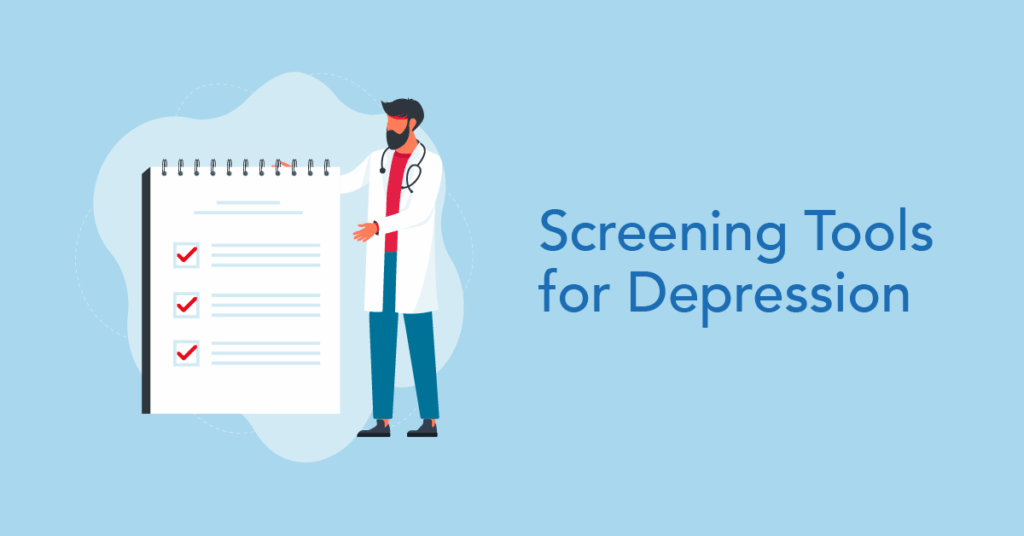Screening Tools for Depression
PHQ-9 is a top screening tool
Assesses mood, energy, interest, and function
A starting point—not a final diagnosis
Overview of Common Depression Tests and Tools
Several reliable screening tools can help identify symptoms of depression. These questionnaires are designed to assess the severity and frequency of common depression symptoms. Here are some of the most widely used tools.PHQ-9 (Patient Health Questionnaire-9)
The PHQ-9 is perhaps the most commonly used depression quiz in primary care settings. This brief nine-question tool asks about symptoms experienced over the past 2 weeks, including:- Interest in activities
- Mood
- Sleep patterns
- Energy levels
- Appetite
- Self-perception
- Concentration
- Physical restlessness or slowing
- Thoughts of self-harm
Beck Depression Inventory (BDI-II)
The Beck Depression Inventory is another respected depression scale that’s been used for over 50 years. The current version (BDI-II) includes 21 multiple-choice questions covering:- Sadness
- Pessimism
- Past failures
- Loss of pleasure
- Guilty feelings
- Self-dislike
- Suicidal thoughts
Hamilton Depression Rating Scale (HAM-D)
Unlike self-administered questionnaires, the HAM-D is clinician-administered. It contains 17 to 21 items, depending on the version, and is considered the gold standard for measuring depression severity in clinical trials. The HAM-D focuses on somatic and behavioral symptoms more than cognitive aspects of depression.Geriatric Depression Scale (GDS)
Specifically designed for older adults, the GDS addresses the unique presentation of depression in elderly populations. It avoids questions about physical symptoms that might be related to aging rather than depression.Edinburgh Postnatal Depression Scale (EPDS)
The EPDS is a 10-question screening tool that’s specifically designed to detect depression in new mothers. It’s typically administered 6 to 8 weeks after childbirth but can be used throughout the first year postpartum.How Screenings Are Used in Clinical Settings
When you visit your health care provider with concerns about your mental health, they might use a depression test as part of your evaluation. Here’s what typically happens:- Initial assessment. Your provider may ask you to complete a screening questionnaire like the PHQ-9 either before or during your appointment.
- Discussion of results. Your provider will review your responses, looking at both the total score and specific answers that might indicate serious concerns.
- Clinical interview. The screening tool results will guide a more in-depth conversation about your symptoms, their duration and the impact on your life.
- Treatment planning. If the screening suggests depression, your provider will discuss treatment options, which might include therapy, medication, lifestyle changes or a combination of approaches.
- Monitoring progress. The same screening tools can be used during follow-up visits to track improvement or worsening of symptoms over time.
Online vs. In-Person Screenings: What to Know
In today’s digital world, you have access to many online depression screening options. These can be valuable resources, but there are important differences between online and in-person assessments. The benefits of online screenings include:- Available 24-7 from anywhere with internet access
- Can be completed in the comfort of your own home
- Can take as much time as you need to think about responses
- Can motivate you to seek professional care if needed
- No immediate professional feedback. Results are typically general and automated.
- Potential for misinterpretation. Without professional context, you might misunderstand your scores.
- Variable quality. Not all online depression quizzes are based on validated clinical tools.
- Immediate professional interpretation. A clinician can explain what your responses mean.
- Personalized follow-up. If depression is indicated, treatment can begin right away.
- Comprehensive assessment. Physical health factors that might contribute to depression can be evaluated.
When to Seek a Full Diagnostic Evaluation
While screening tools are helpful indicators, certain situations warrant a complete professional evaluation. These include:- High scores on screening tools
- Persistent symptoms
- Thoughts of self-harm or suicide
- Previous history of depression
- Life changes or trauma.
- Physical symptoms without a clear cause
- Substance use concerns
- A thorough medical history
- Discussion of current symptoms and their impact
- Exploration of family history
- Review of medications and substance use
- Possibly blood tests to rule out physical conditions that can mimic depression
- Assessment of suicide risk
- Consideration of other mental health conditions that might be present
Limitations of Screening Tools
While depression screening tools provide valuable information, it’s important to understand their limitations. For example, a high score on a depression quiz doesn’t automatically mean you have clinical depression. Similarly, a low score doesn’t guarantee the absence of depression. Cultural factors also matter. Many screening tools were developed and validated primarily in Western populations and might not capture how depression presents in all cultural contexts. Screenings give you a snapshot instead of a complete picture. They capture how you’re feeling at one point in time, which might not reflect your overall experience. It’s also important to note that coexisting conditions can complicate results. Anxiety, substance use disorders and medical conditions can all influence depression screening results.The Power of Seeking Help
Ready to take the next step? The Mental Health Hotline is here for you. Our compassionate counselors are available 24-7 to help you understand your depression screening results, connect you with appropriate resources and provide support during difficult moments. You don’t have to figure this out alone. Contact us or visit our website to access online resources, including confidential depression tests and direct connections to mental health professionals in your area.Editorial Team
-
 Written By: Mental Health Hotline
Written By: Mental Health HotlineMental Health Hotline provides free, confidential support for individuals navigating mental health challenges and treatment options. Our content is created by a team of advocates and writers dedicated to offering clear, compassionate, and stigma-free information to help you take the next step toward healing.
-
 Reviewed By: Dr. Daphne Fatter
Reviewed By: Dr. Daphne FatterDaphne Fatter, Ph.D., is a licensed psychologist, and international speaker dedicated to providing education on integrative trauma-informed therapies. She is the author of Integrating IFS (Internal Family Systems) into EMDR therapy. She is EMDR Certified and an EMDRIA Approved Consultant and has almost 20 years of experience providing EMDR. She is also IFS Certified and an Approved...


